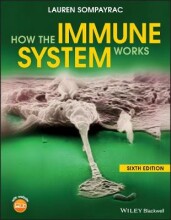HN Product development in practice
8 important questions on HN Product development in practice
What does marketing do (ideally)?
- Study customer needs and wants in well defined market segments
- Allocate marketing effort in relation to the long-run profit potential of the targeted segments
- Develop winning offerings for each target segment
- Measure company image and customer satisfaction on a continuous basis
- Continuously gather and evaluate ideas for new products, product improvements and services to meet customers' needs
- Influence all company departments and employees to be customer centric in their thinking and practice
What is the difference between B2C and B2B
- product(transaction) driven
- large target market
- individual purchases
- single step buying process
- brand identify from repetition and imagery
- emotional buying decision
- merchandising and point of purchase activities
B2B
- Relationship driven
- small focussed market
- professional client /team
- multi-step buying process
- brand identity from personal relationships
- rational buying decision
- educational and awareness creating activities
Marketing-focus depends on market place, which 6 concepts?
- Production
- product
- selling
- marketing
- consumer
- societal marketing
- Higher grades + faster learning
- Never study anything twice
- 100% sure, 100% understanding
Strategic vs operational marketing
- Segmentation, Targeting & Positioning (STP)
Operational marketing
- Product, price, place, promotion
How does the consumer motivations looks like (give order)
- Food security
- Food safety
- Taste, price, convenience
- Health
- Sustainability
- Moral
- Physiological (water, sleep, food)
- Safety (security, shelter, protection)
- Belongingness (love, friendship, acceptance)
- Ego needs (prestige, status)
- Self actualisation (self-fulfilment
Mega-benefits:
- safe&healthy
- taste&pleasure
- convenient
- well being&fitness
There are three types of attributes/benefits
- Search
- verified through senses prior to purchase (brans name, colour, price)
- Experience
- verified through senses upon normal consumption (sensory qualities, usage convenience, social value)
- Credence
- can't be verified, not even after normal consumption (health, environmental value)
- Credence attribute perceptions are inferred
- informational belief formation (based on information form others)
- inferential belief formation (own rules of thumb)
What are the marketing segmentation bases (4)
- Geographic (region)
- Demographic (age)
- Psychographic (values, lifestyle, personalities)
- Behavioural (product usage, benefits sought)
What are the criteria for effective market segmentation (5)
- Measurable
- members of target group can be identified
- Substantial
- large enough to justify separate marketing mix
- Accessible
- can be reached effectively
- Differentiable
- respond differently to marketing mix
- Actionable
- effective programs can be formulated
The question on the page originate from the summary of the following study material:
- A unique study and practice tool
- Never study anything twice again
- Get the grades you hope for
- 100% sure, 100% understanding






























